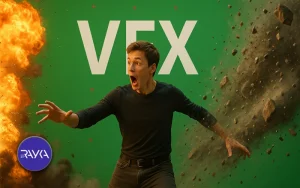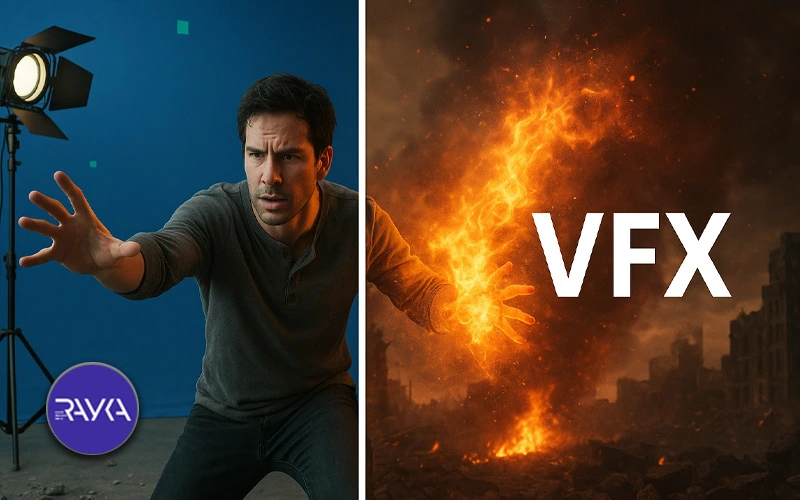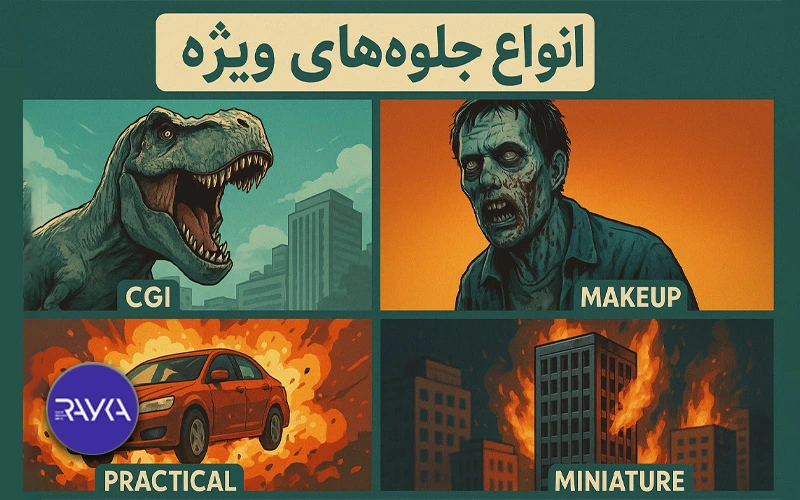
VFX and special effects play a crucial role in the production of films, commercials, and digital content. These technologies help creators bring scenes to life that go beyond the limits of the real world. With VFX, it’s possible to showcase massive explosions, imaginary creatures, or even futuristic cities—without them actually existing.
In today’s world, many films and commercials would lose their appeal without visual effects. In this article, we’ll explain in simple terms what VFX is, how it’s used, and why it has become an essential part of both cinema and advertising.
VFX, or visual effects, refers to techniques used to create imagery that goes beyond what’s possible in real life. These effects are added during the post-production stage, after the main filming is done. Instead of building dangerous or impossible scenes in real life, VFX artists use digital tools to simulate them.
In the past, visual effects were done physically using models, smoke, fire, or lighting tricks. But with the rise of computer technology, a more advanced form emerged—what we now call VFX. This technology not only reduces production costs but also gives creators more freedom to be imaginative.
VFX and visual effects aren’t just for sci-fi films or Hollywood blockbusters. This technology is widely used across many creative industries. From TV commercials and music videos to Instagram content, VFX plays a major role in modern media. The table below highlights the main uses of VFX:
| Use | Description |
|---|---|
| Creating Unreal Scenes | Designing imaginary, galactic, or fantasy landscapes that can’t be physically built. |
| Reconstructing the Past or Future | Simulating ancient cities, historical battles, or futuristic environments. |
| Generating Fictional Creatures | Designing monsters, talking animals, or digital characters like dragons or aliens. |
| Enhancing Visual Excitement | Using explosions, fire, storms, or controlled destruction to boost visual appeal. |
| Adding or Removing Elements | Erasing wires, green screens, or adding items that weren’t present during filming. |
| Use in Advertising and Branding | Creating engaging promotional videos that blend reality with graphic effects. |
Using VFX isn’t just about visual beauty—it also serves many practical and creative purposes. Below are the main reasons why visual effects are widely used in production:

VFX includes a variety of techniques, each playing a unique role in the content creation process. Understanding these methods helps us see how each effect is made and how it influences the final visual outcome. Here are the most common types of visual effects:
CGI is one of the most widely used tools in VFX. It involves creating fully digital objects, creatures, or environments. CGI is especially popular in sci-fi films and animated movies.
Compositing is the process of combining multiple images or video layers into a single final frame. This technique merges backgrounds, effects, and subjects to create a believable scene. The use of green screens is a common example of compositing.
Matte painting is a method of designing imaginary or expansive environments, either by hand or digitally. These paintings are often used for distant landscapes or large backgrounds. When combined with live-action footage, they help build stunning, otherworldly settings.
Motion graphics and animation add movement to graphic elements like text, logos, or icons. This technique is commonly used in ads, intros, and explainer videos. When paired with VFX, it allows for the creation of visually striking and creative content.

At first glance, VFX and animation might seem very similar, but they are completely different fields. Animation is digitally created from start to finish, while VFX is developed during post-production and is based on real filmed footage. To better understand these differences, let’s compare them in the table below:
| Comparison | Animation | VFX (Visual Effects) |
|---|---|---|
| Definition | Fully digital creation of scenes and characters from scratch | Adding digital elements to real filmed footage |
| Use | Animated films, explainer videos, cartoon ads | Feature films, live-action commercials with graphic elements |
| Visual Content | Completely designed by software | Combination of real footage and digital imagery |
| Example | Movies like Toy Story or Frozen | Adding a digital dragon to a real scene in Game of Thrones |
VFX and visual effects have had a significant impact on the advancement of cinema, leading to a fundamental transformation in storytelling and the audience’s visual experience. Visual effects make it possible to create scenes that are either impossible or extremely costly to produce in the real world. From space journeys to mythical creatures, all have entered the world of cinema with the help of VFX.
VFX has allowed directors to bring their imagination to life without physical limitations. This technology has revolutionized genres such as sci-fi, action, and fantasy. Moreover, with the expansion of VFX, audience expectations have risen, pushing cinema towards producing more realistic and immersive visuals.
VFX and visual effects are among the most important tools in today’s film industry and visual content production. This technology has expanded the boundaries of creativity and enabled the creation of scenes and stories that were once difficult to imagine. By understanding the types and applications of visual effects, we can better appreciate their significance in cinema, advertising, and digital art.
With technological advancements, the use of VFX continues to grow, playing a vital role in producing engaging and impactful content. If you are looking to create professional commercials or cinematic projects, utilizing visual effects is a smart and essential choice.
In cinema, advertising, video games, and content creation for social media.
No, VFX is applied to real footage, while animation is created from scratch.
To save costs, enhance appeal, and create impossible scenes.